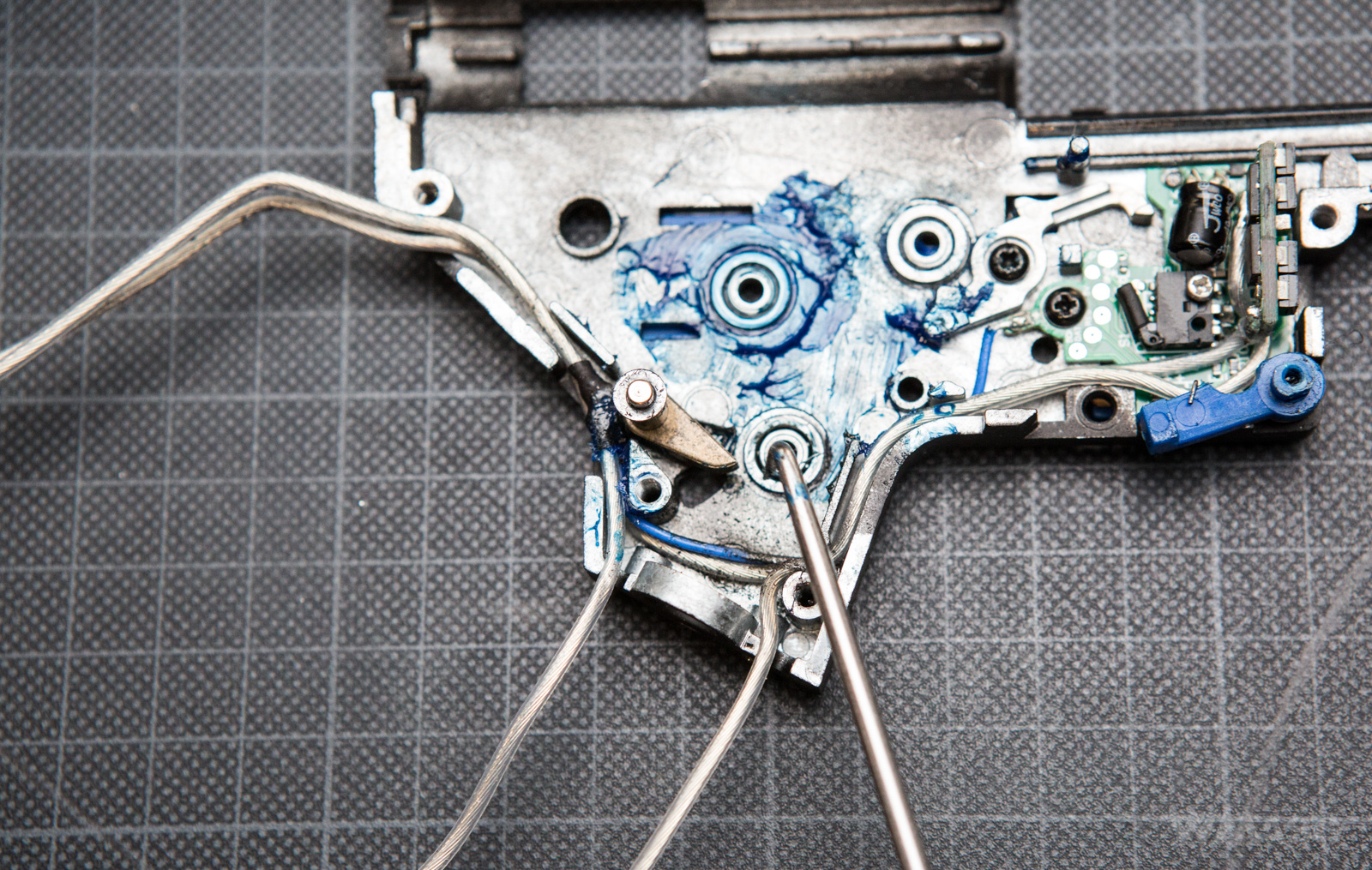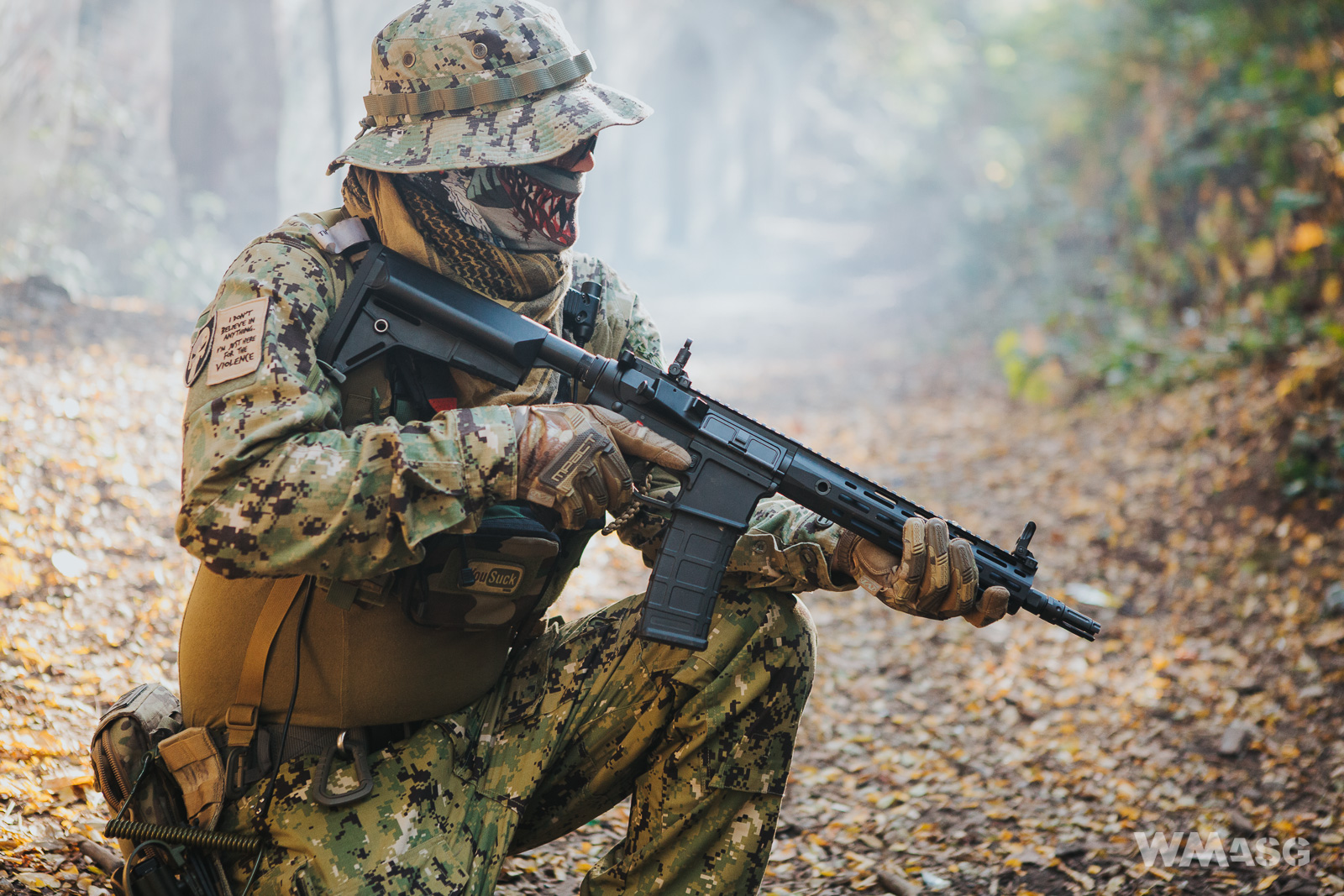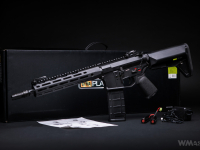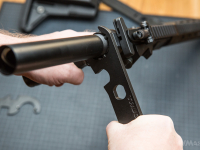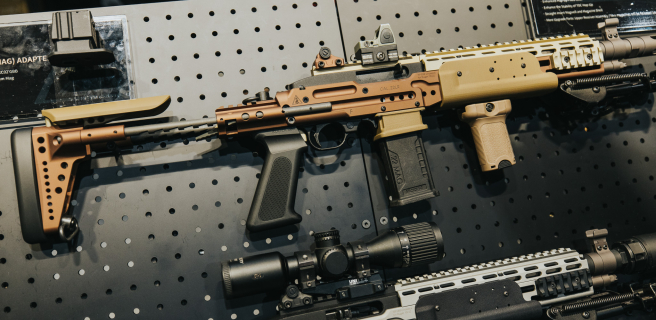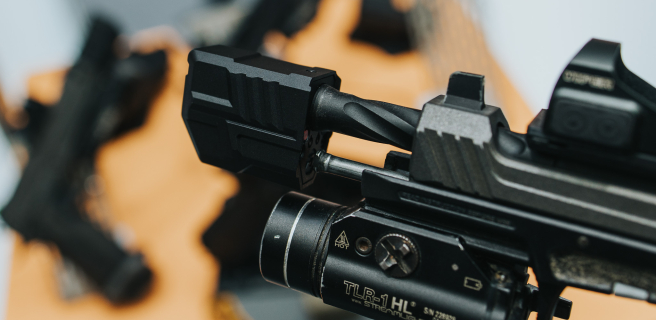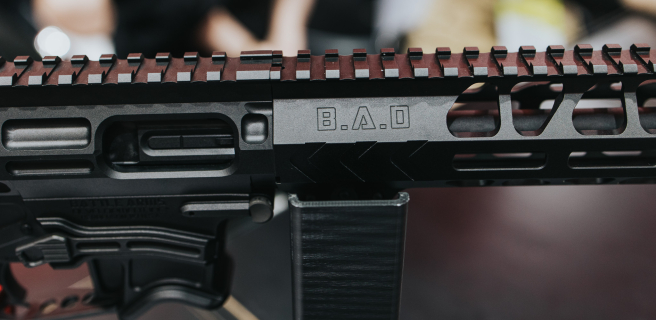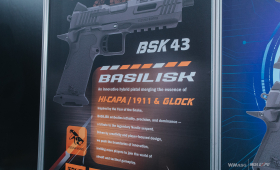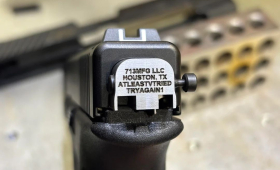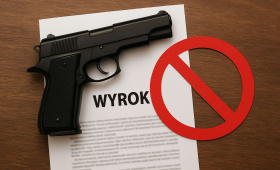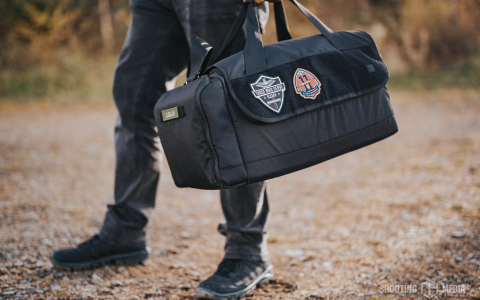Disconnecting the upper and lower receiver
In the first part of the text I wrote that the upper receiver is slid over the lower receiver and secured with a front pin. It is a standard solution currently used by many manufacturers.
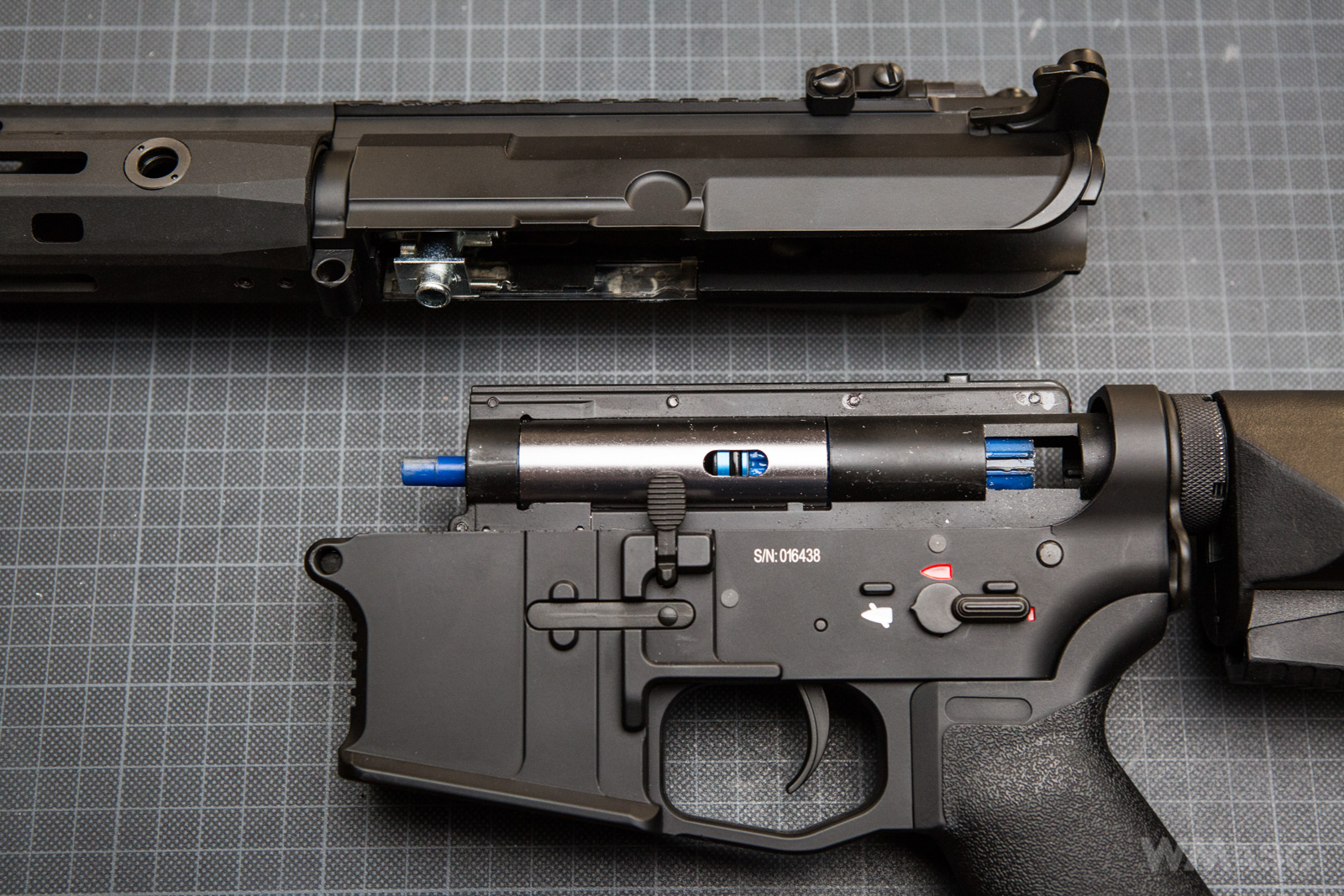
I would like to emphasized that the pin is protected against loss and does not slide out of the socket completely. Similarly, the rear pin, which traditionally stabilizes the mechanism in the lower receiver, is also protected.
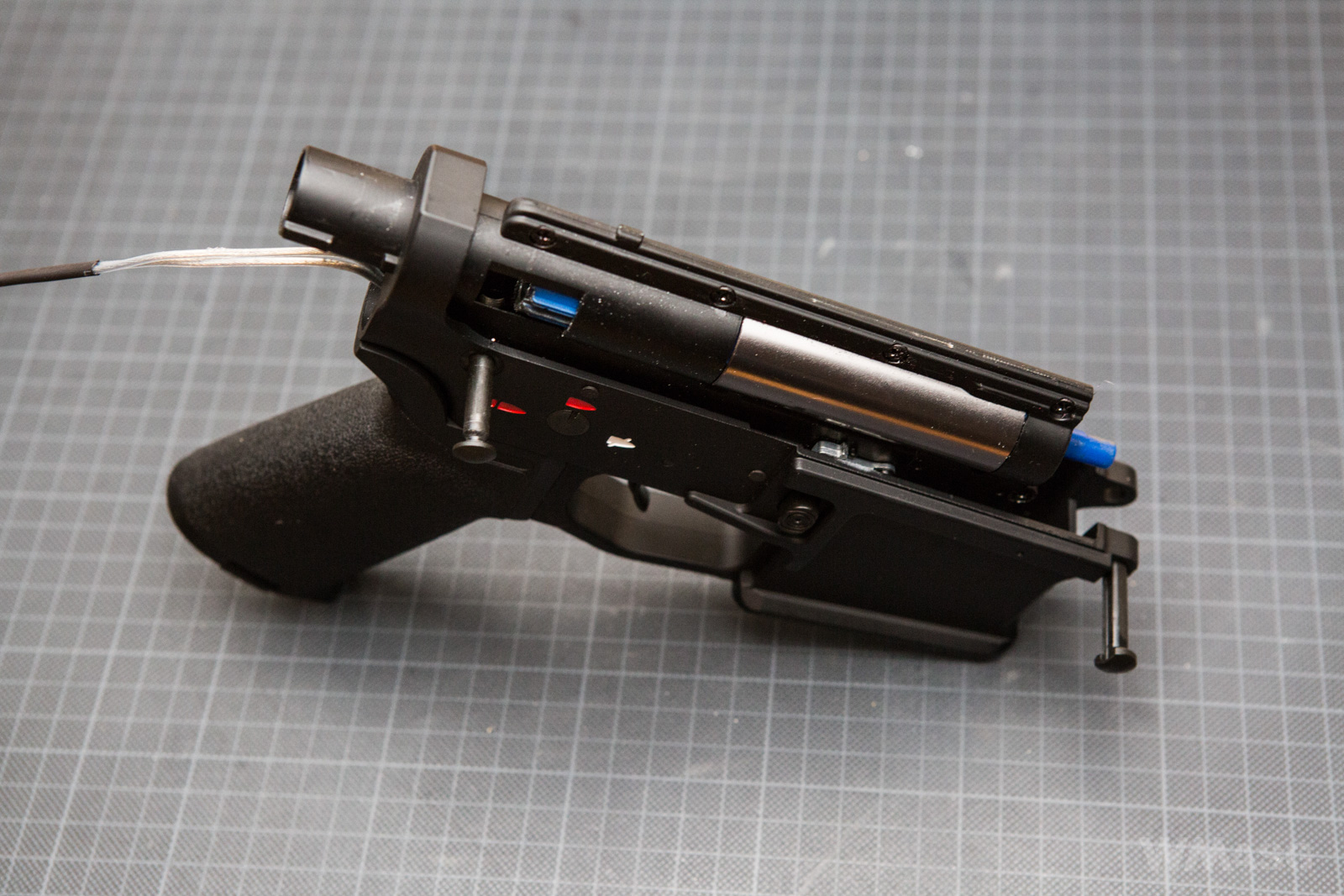
In the photo below you can see a part of the locking pin (red arrow)
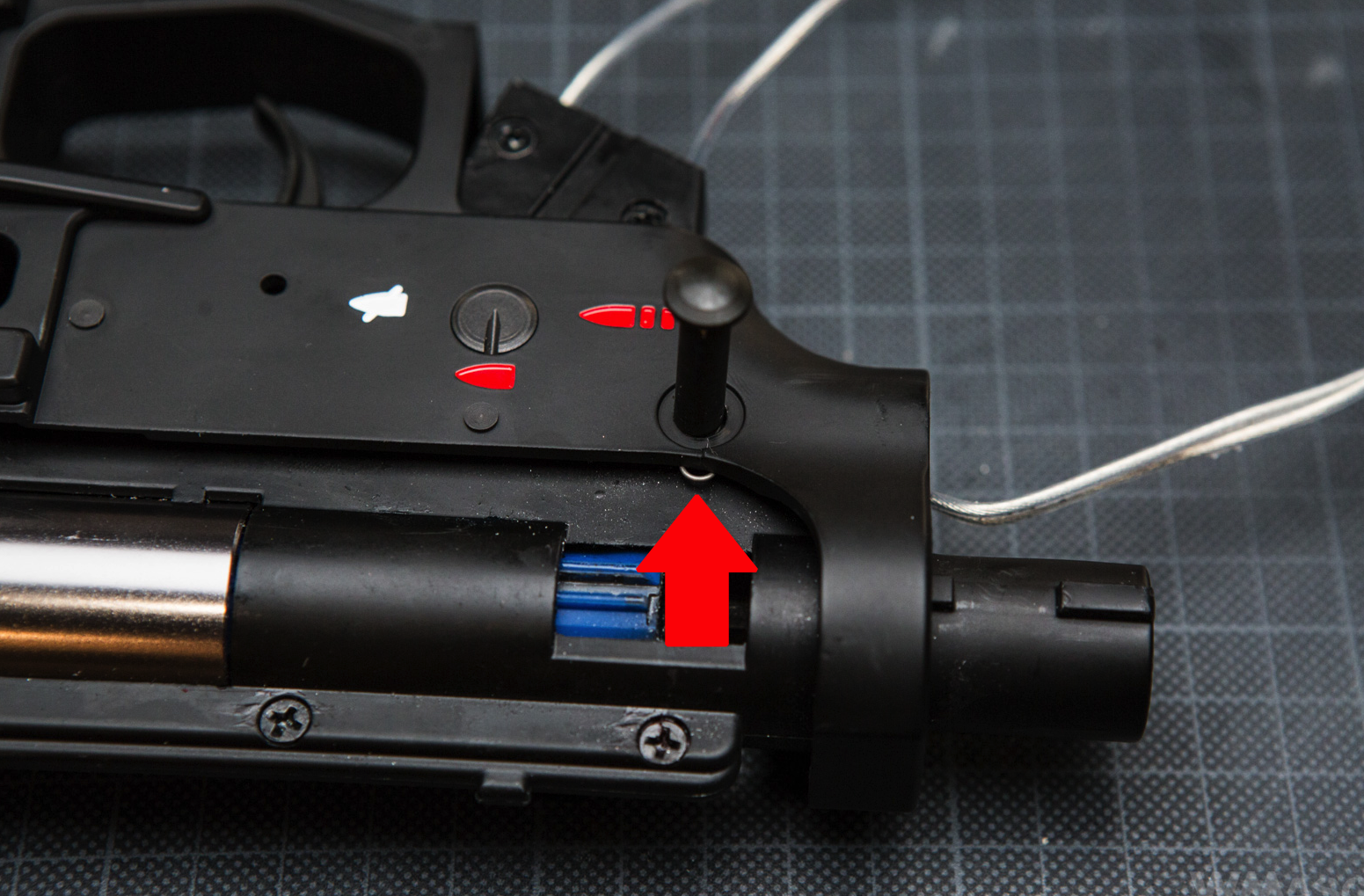
I show this because removing the locking pin and then taking out the rear pin from the lower receiver is necessary to take out the gearbox.
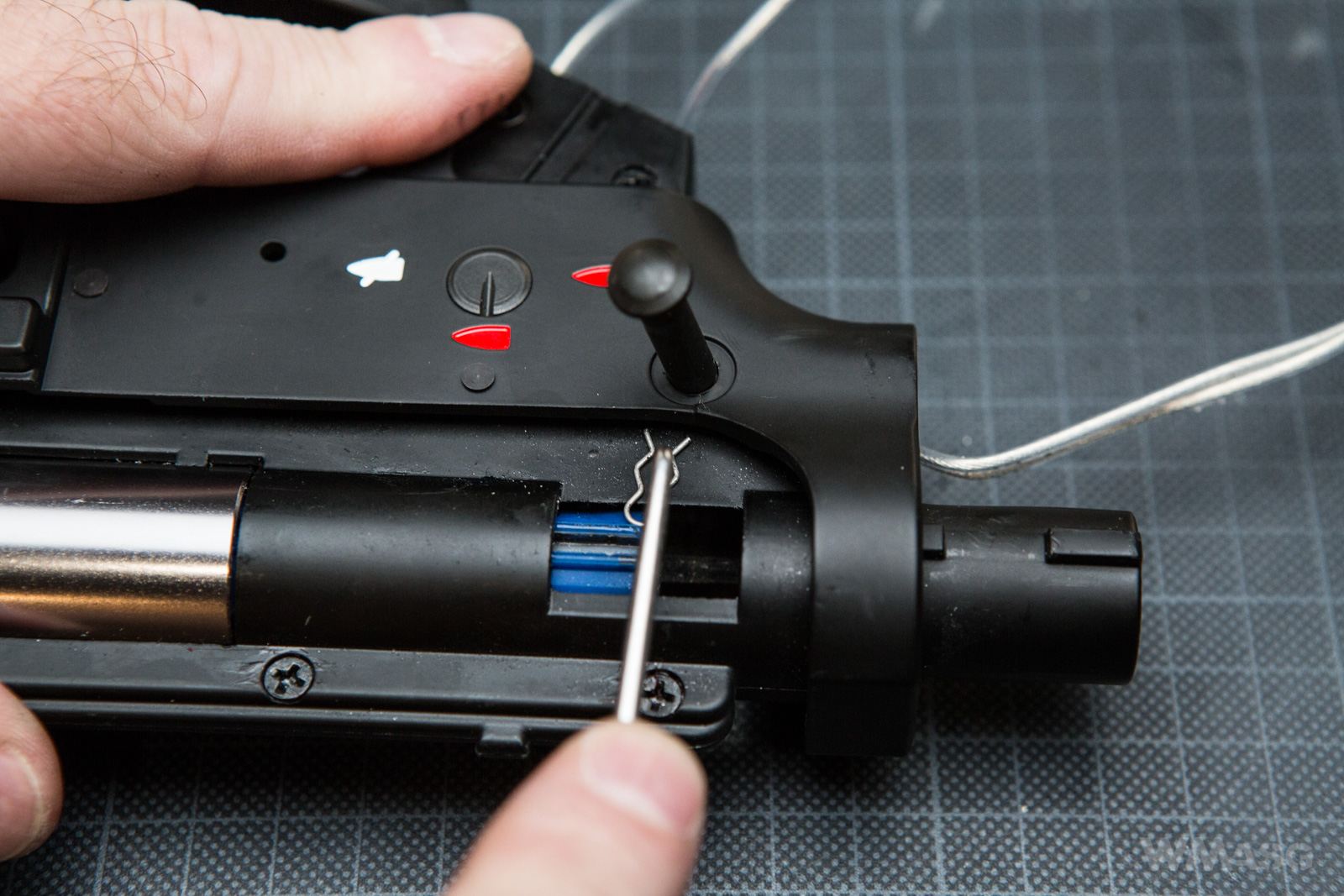
The frame
The frame is a standard V2 with the feature allowing to quickly replace the spring.
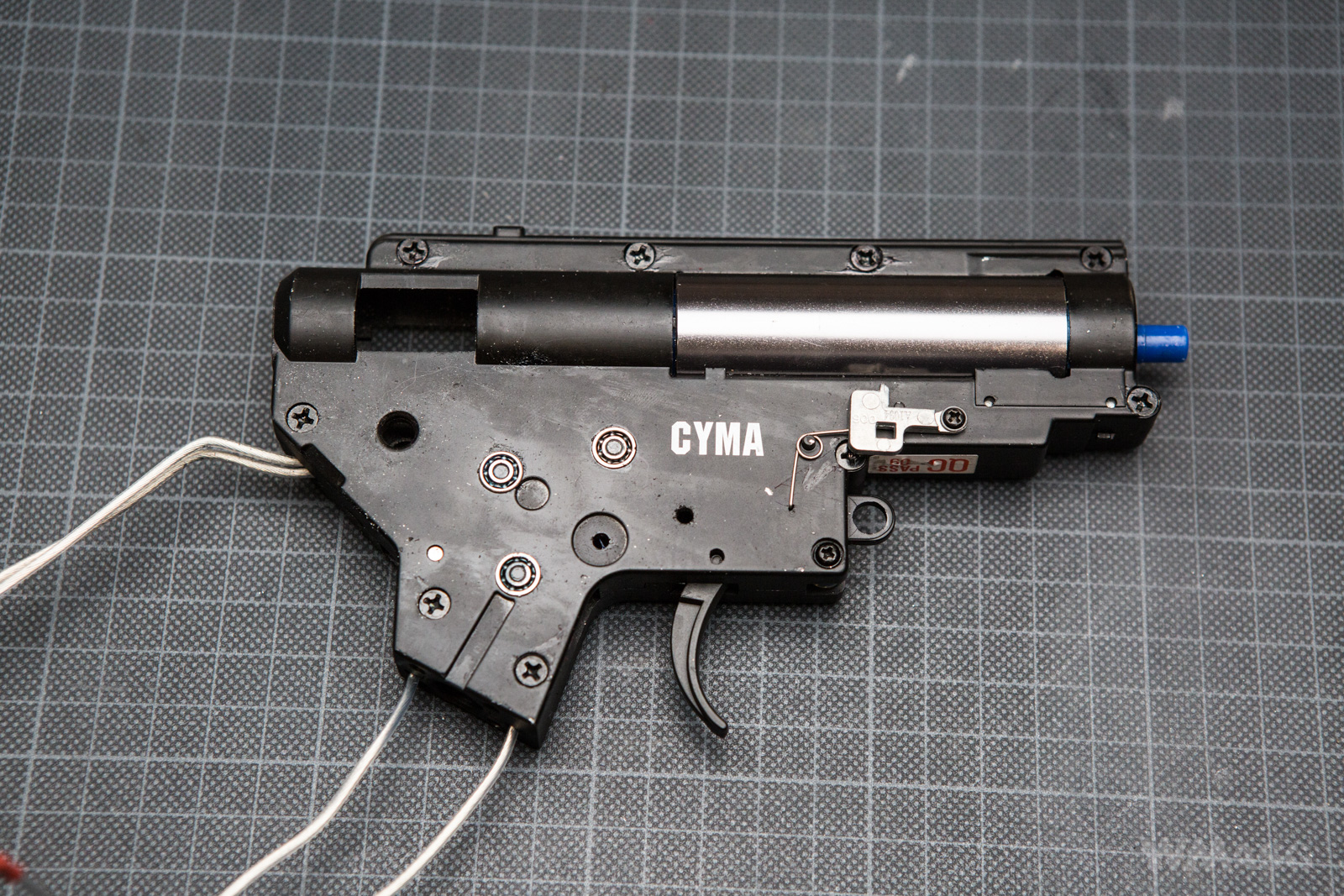
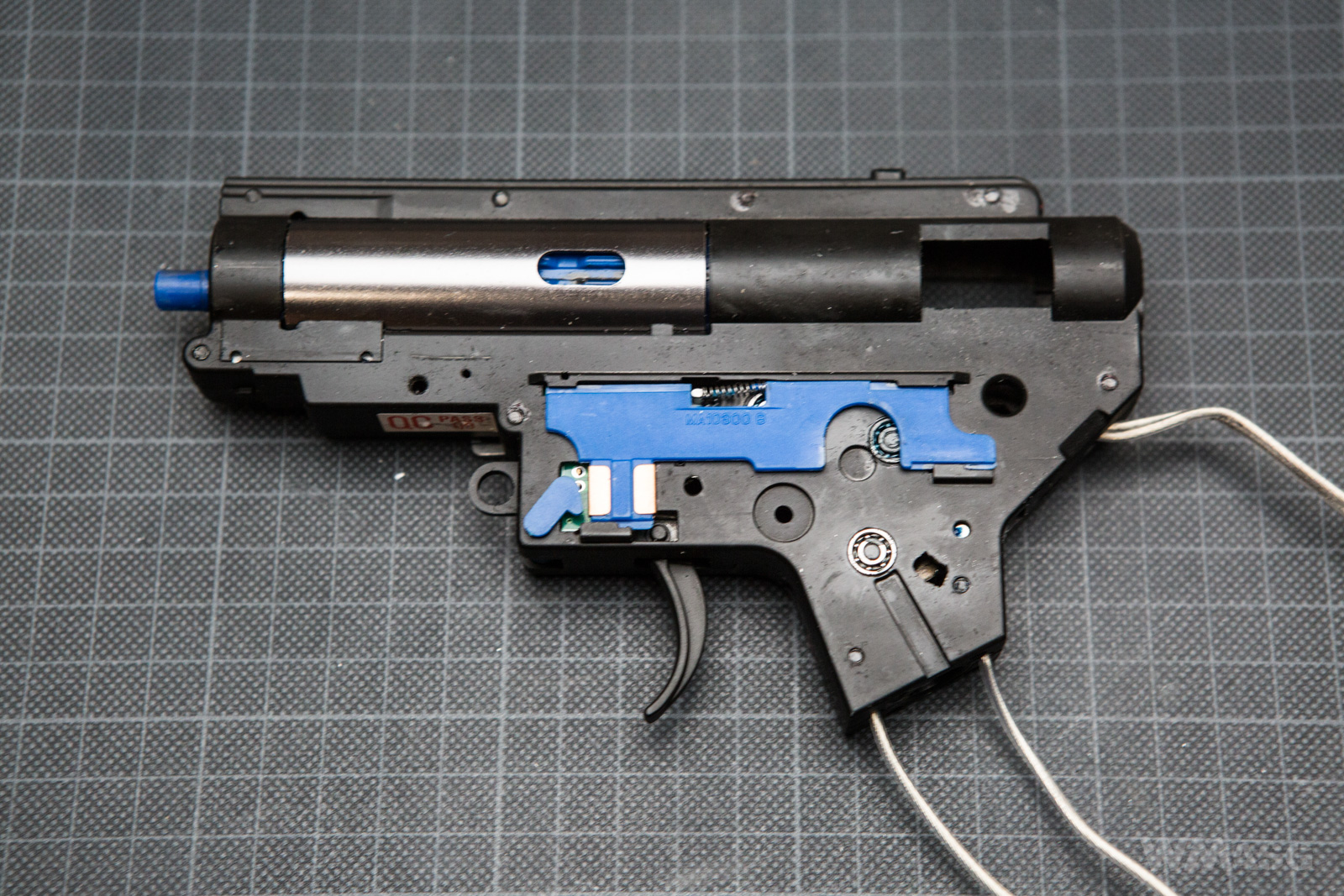
The front of the cylinder port is slightly reinforced, and the corners are rounded to change the distribution of forces and extend the service life. Despite mounting the spring guide to the replica's lower receiver, there is a real chance to match and use a classic spring guide.
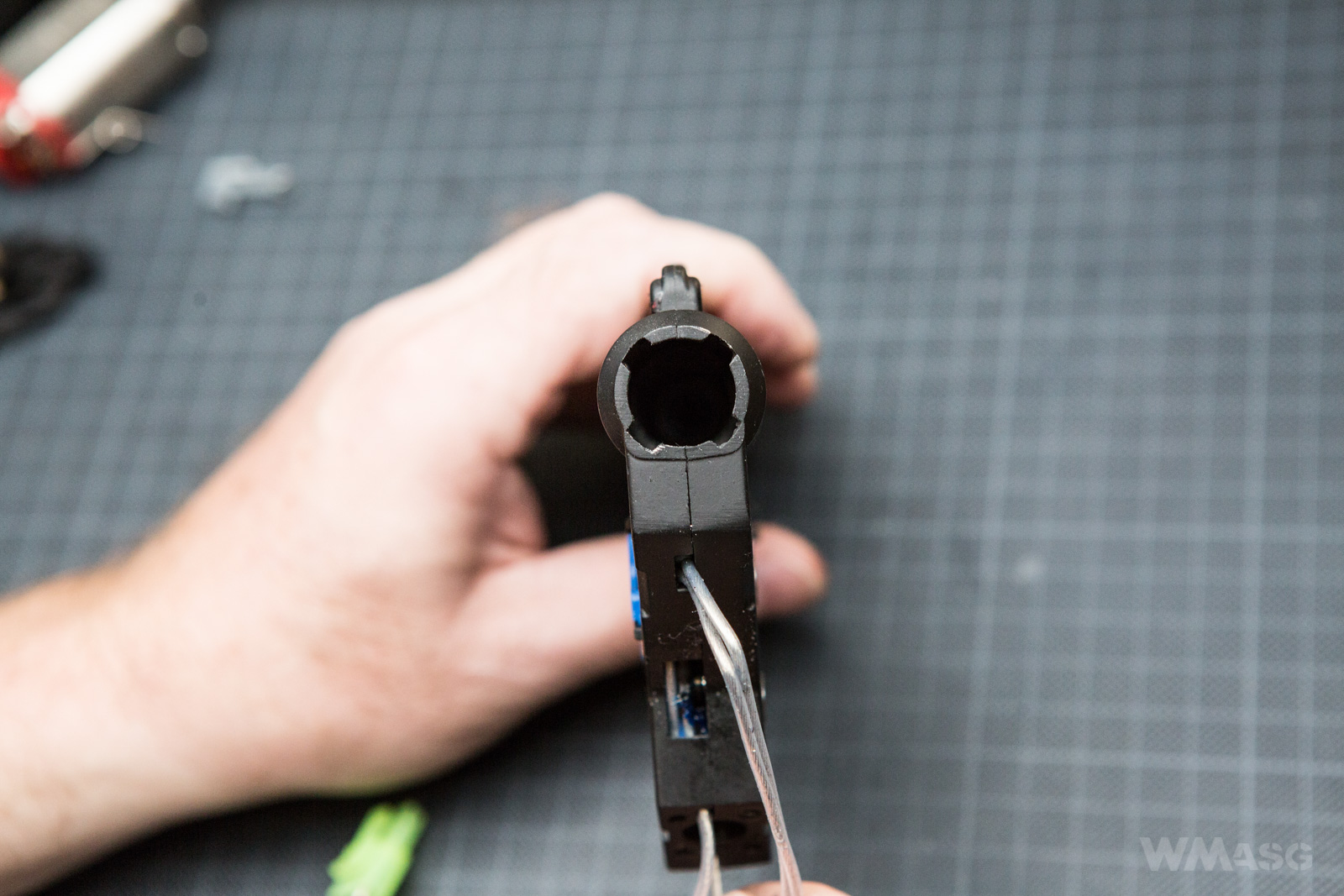
Inside you can see slots for the latches of a classic V2 spring guide.
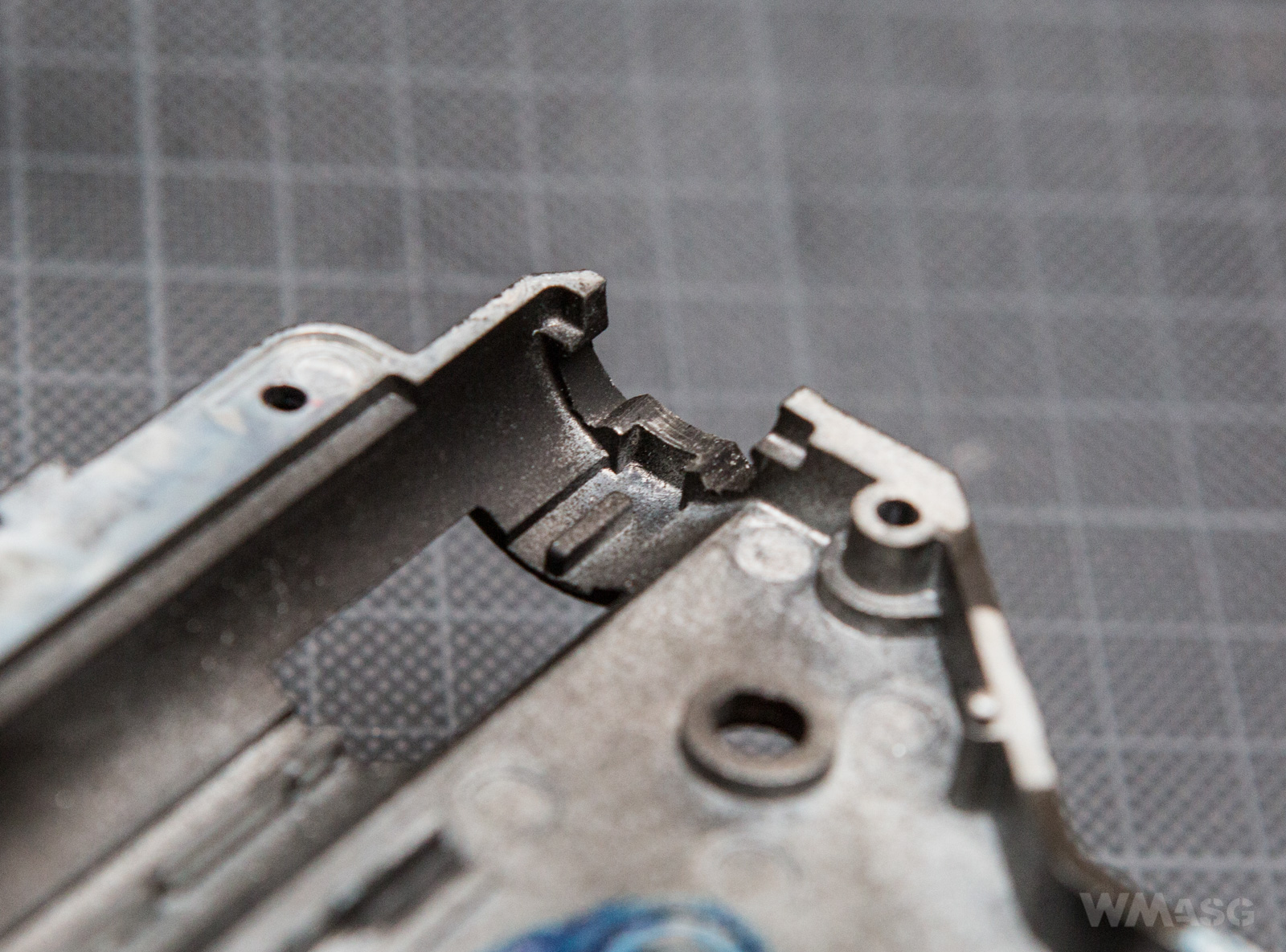
This is probably a good moment to raise the issue of possible compatibility of the CM.097X frame with those available on the spare/tuning parts market. This is even more important since none of us currently know how long will the innovative mounting of the spring guide in the lower receiver work. Especially, when working with harder springs in which case the threads on the guide and the socket are exposed to shearing. That is why we conducted the already mentioned experiment. The result:
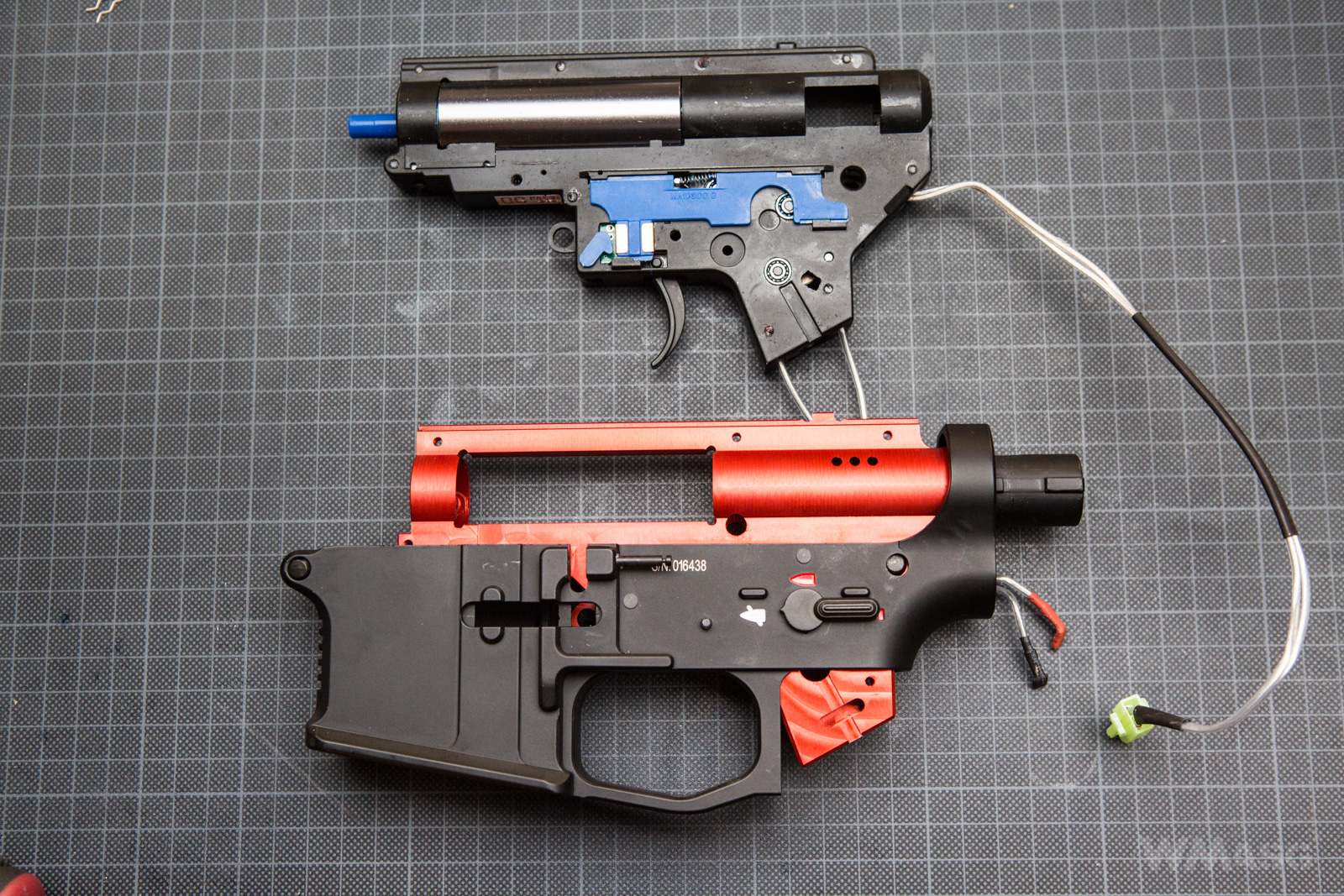
So, hypothetically, if someone insisted or needed to, the CM.097X can be fitted with, for example, a standard, including aluminum, frame. But ... One will also need to use a standard stock guide with the washer and the fixing screw (the one screwed into the spring guide). Why? Well, the factory supplied stock guide is locked on the cutout of the stub pipe visible below:
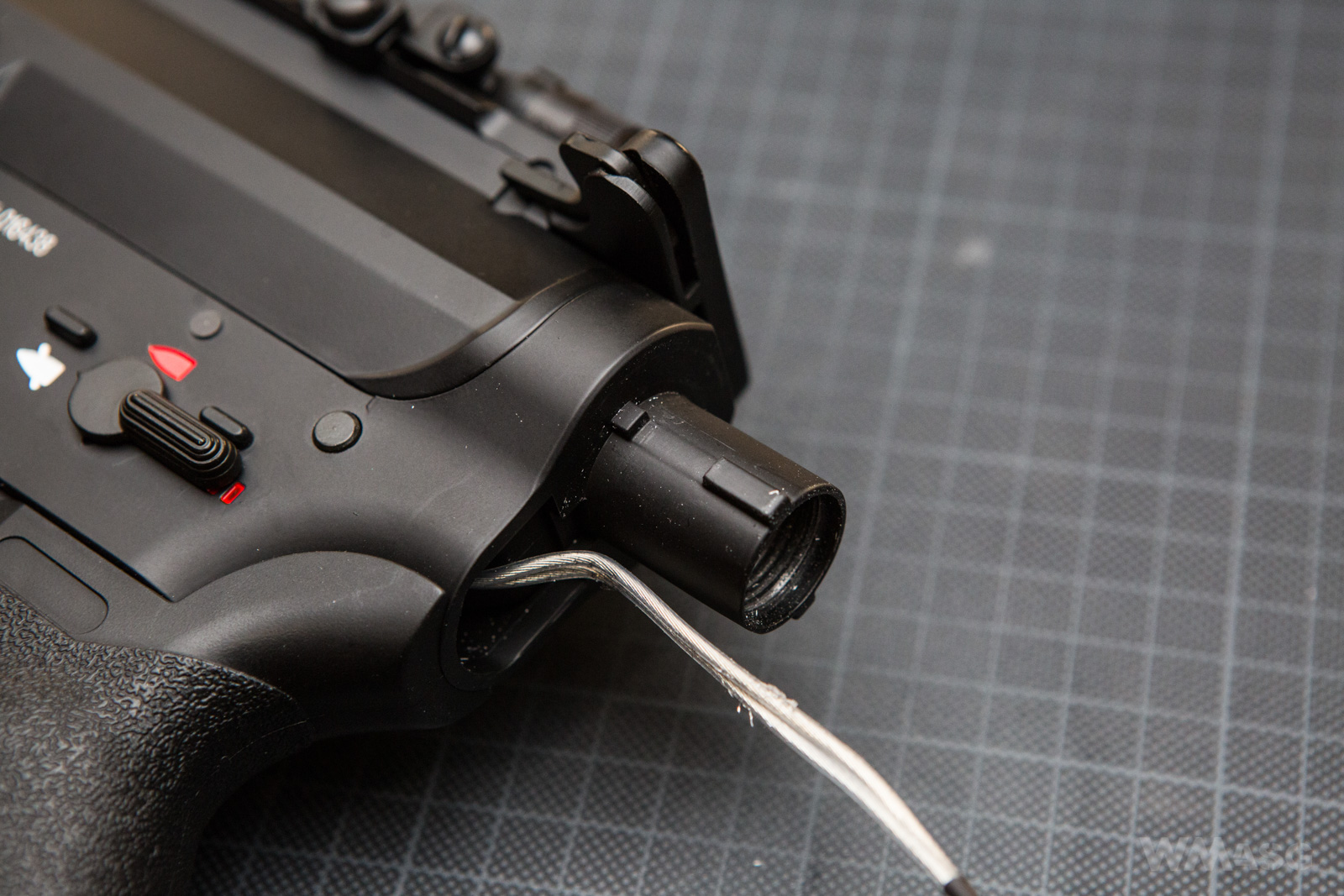
It is put on while rotated 30°right and then rotated left (secured in the notch) and tightened with the crown nut.
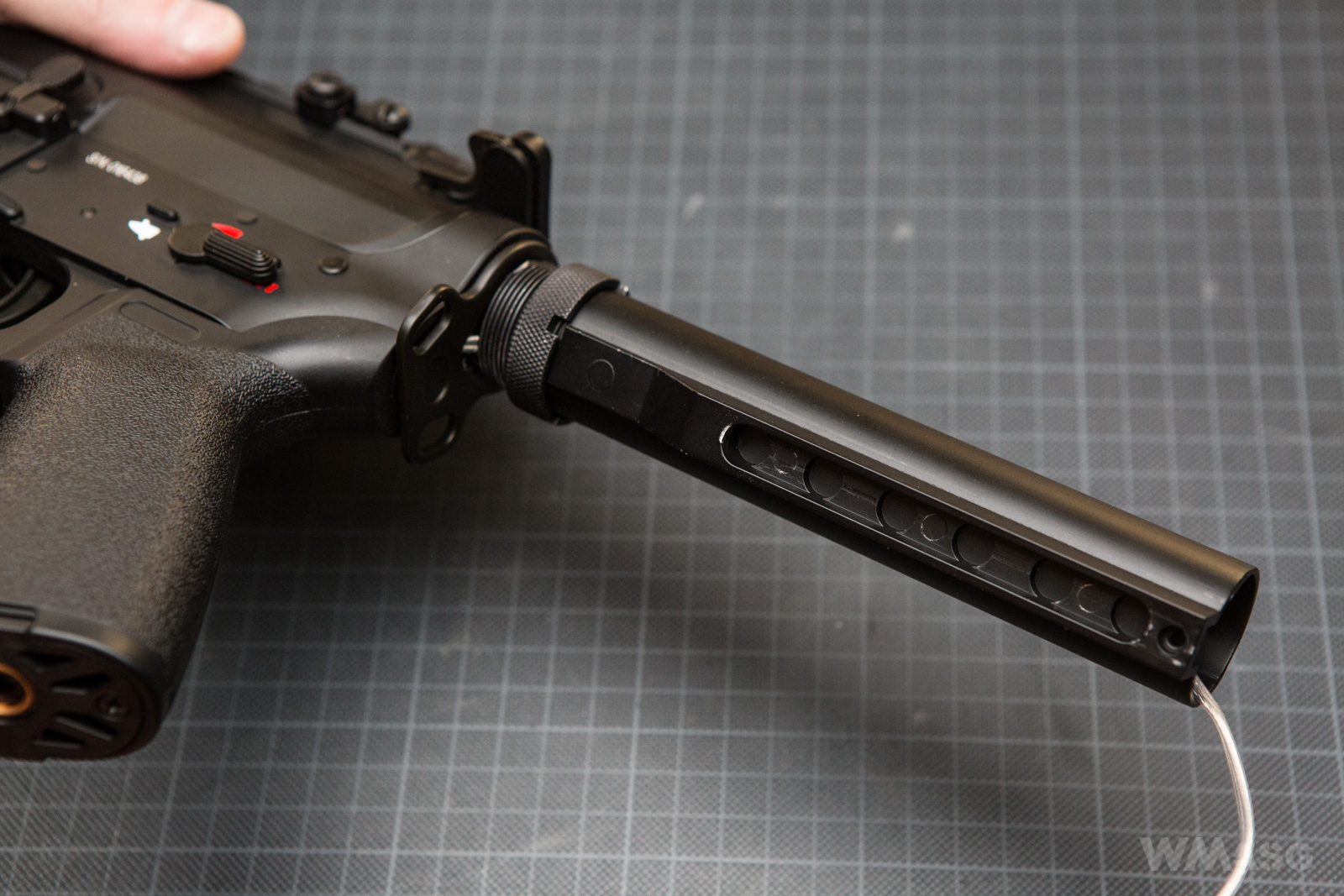
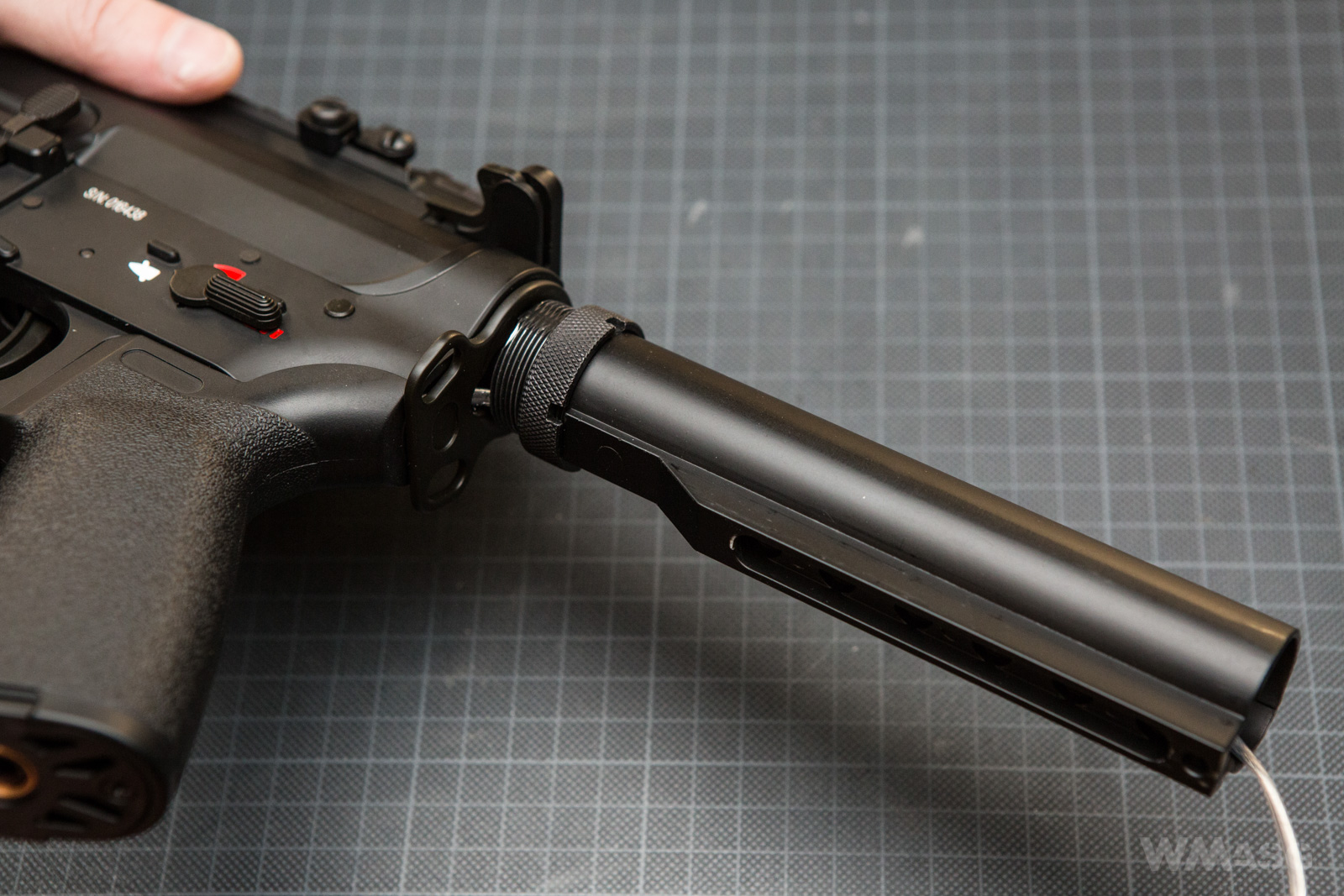
There is no washer, no fixing screw. Hence, changing the spring guide also forces replacement of the buffer tube.
The inner barrel and the Hop-Up chamber
The chamber is a standard M16/M4 chamber with adjustment done by means of a system of 3 gears.
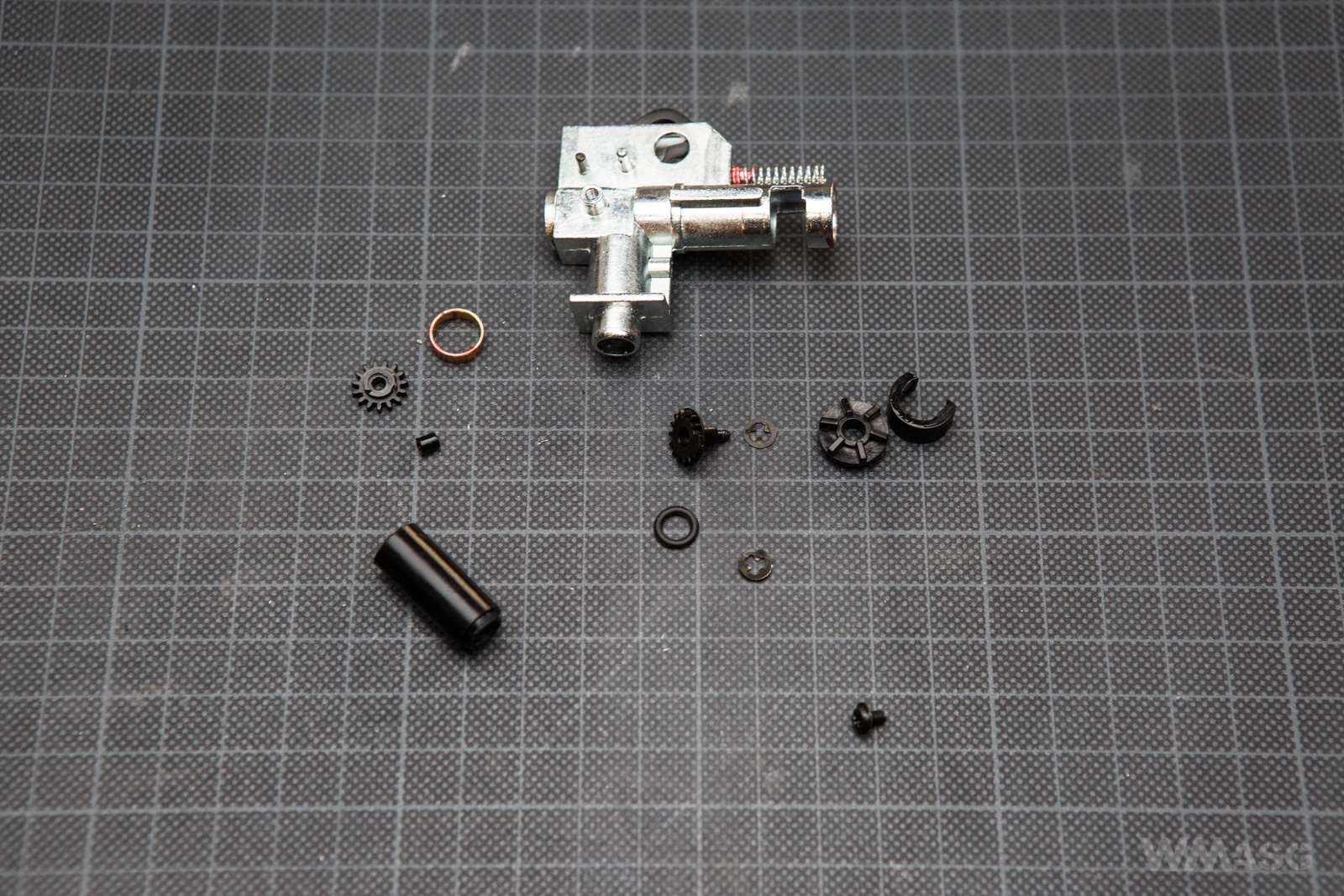
The black bucking looks equally standard.
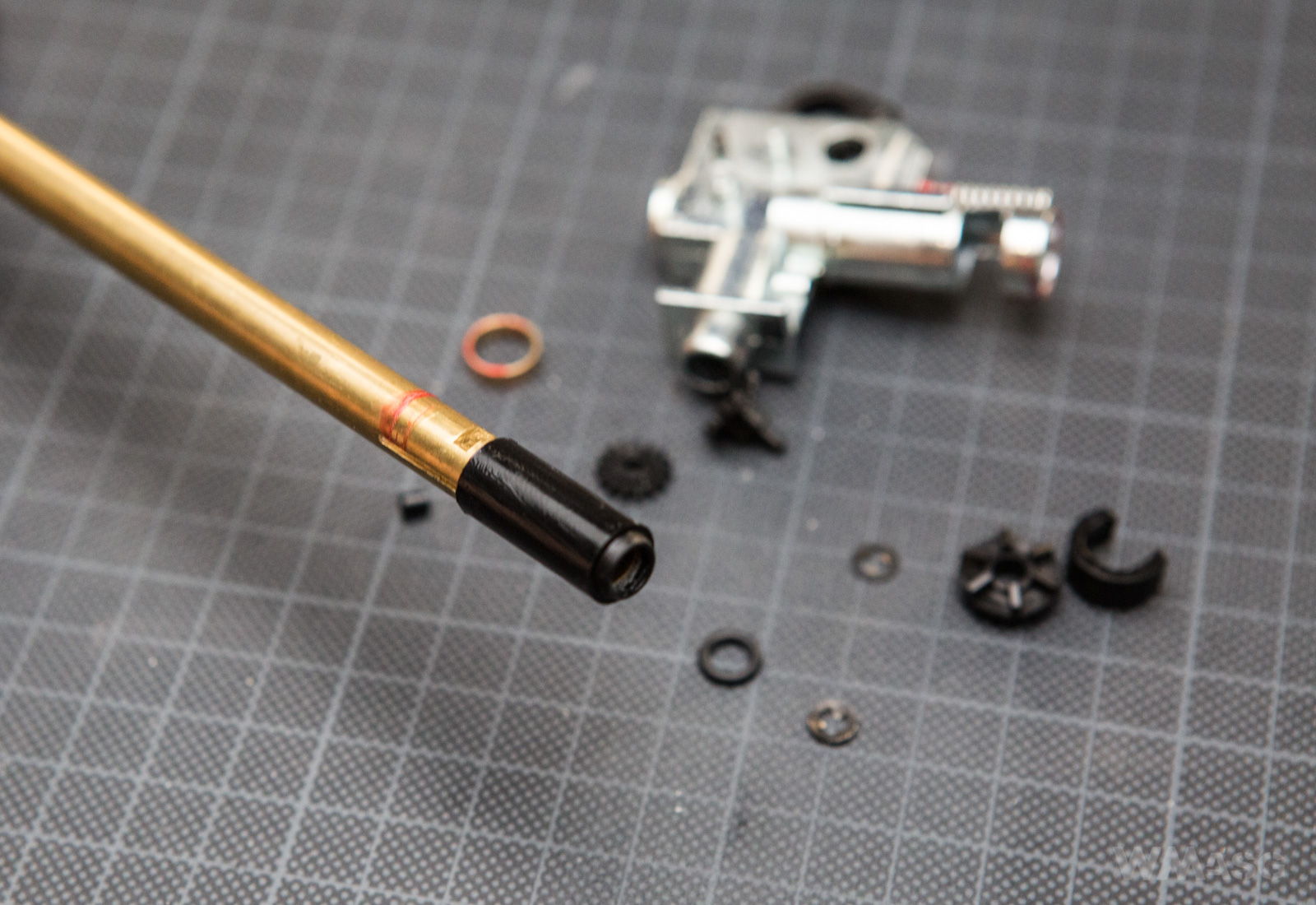
The brass inner barrel has a length of 295 mm.
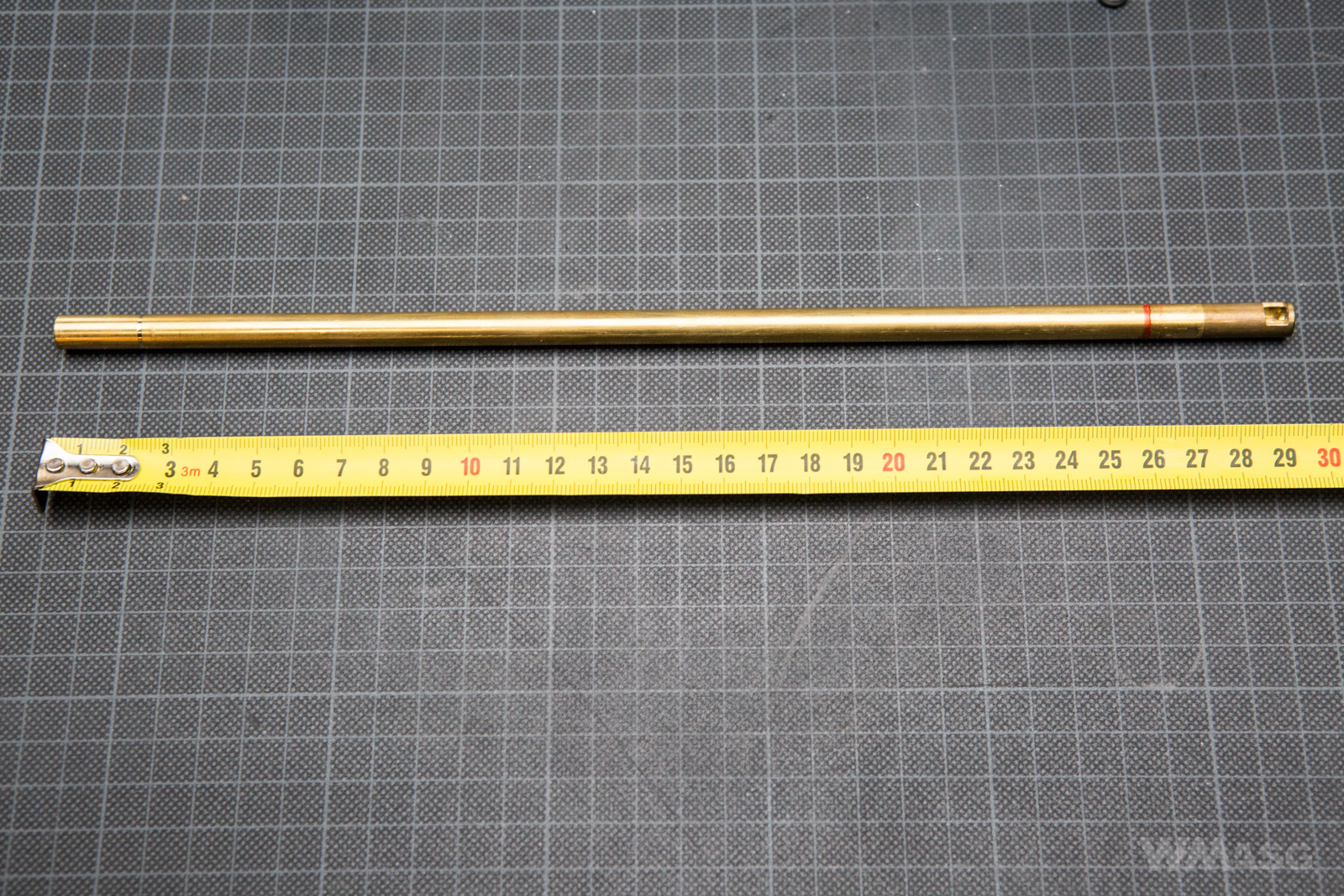
The motor
When planning any work on the replica, it is worth paying attention to the wiring in the pistol grip. The wires are run separately, one in the front and the other in the back of the grip, and the motor is placed backwards, with the "+" clamp in the back.
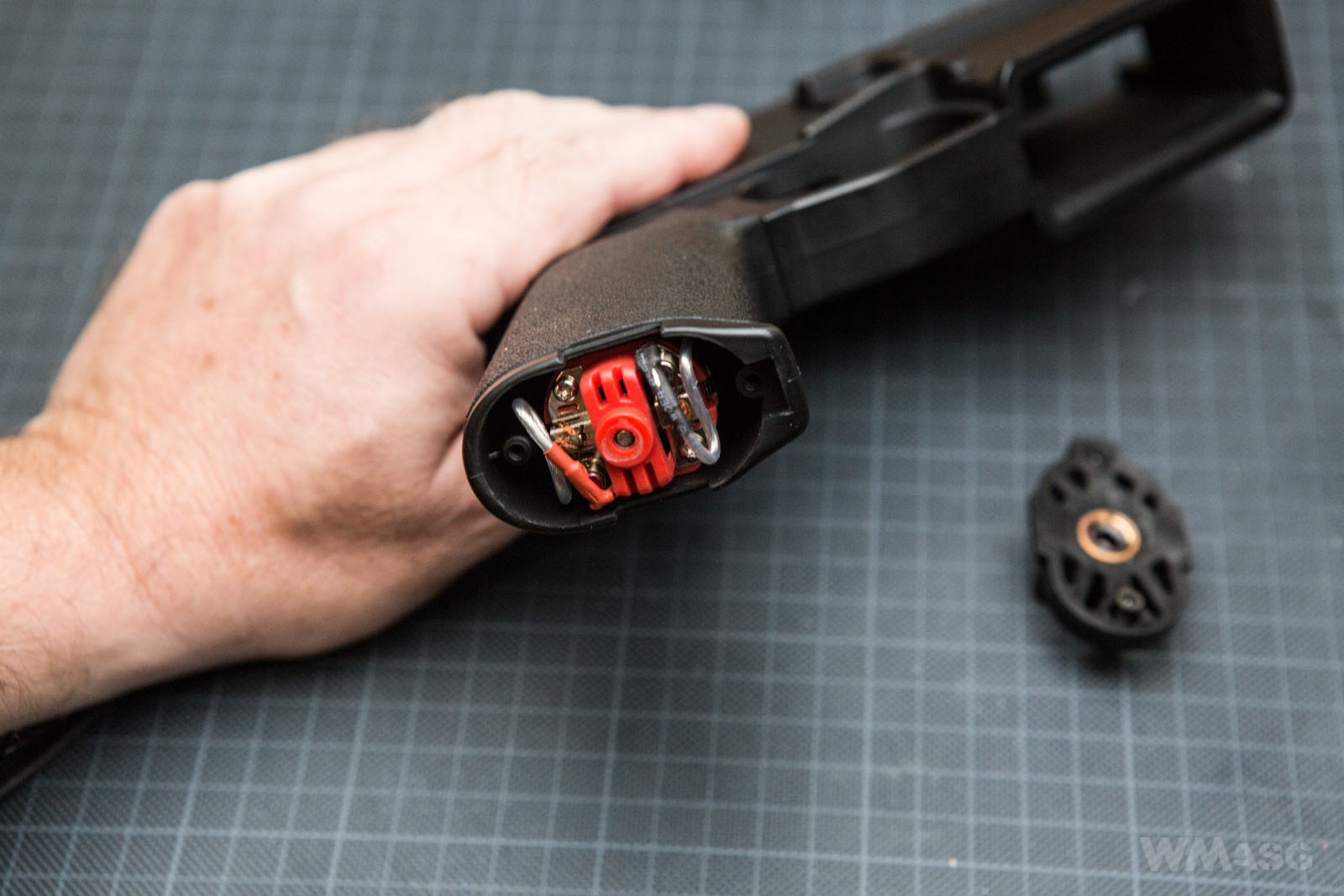
The high-speed motor has the manufacturer's name engraved on it and no other markings.
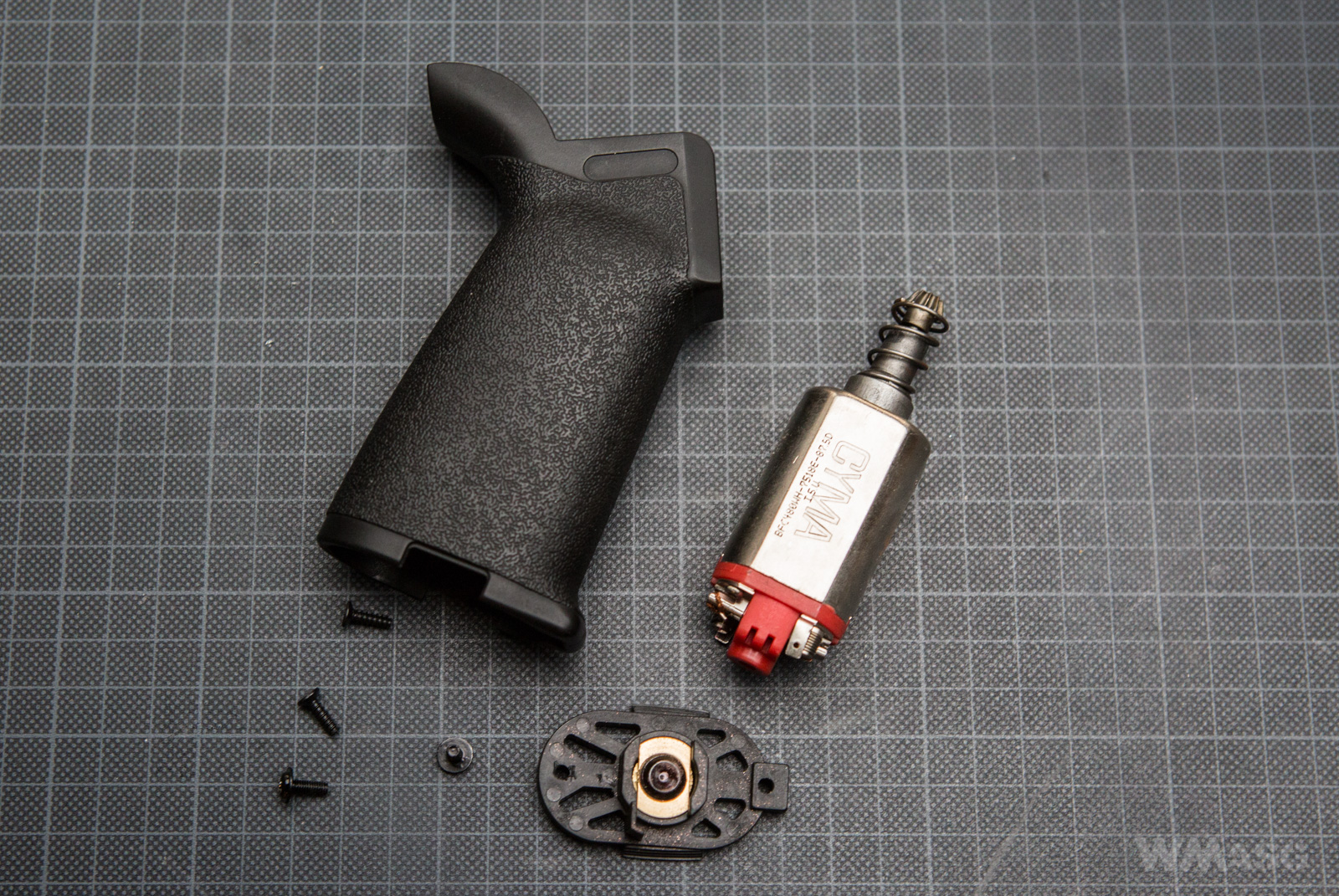
Internal parts
Heavily lubricated 8 mm ball bearings.
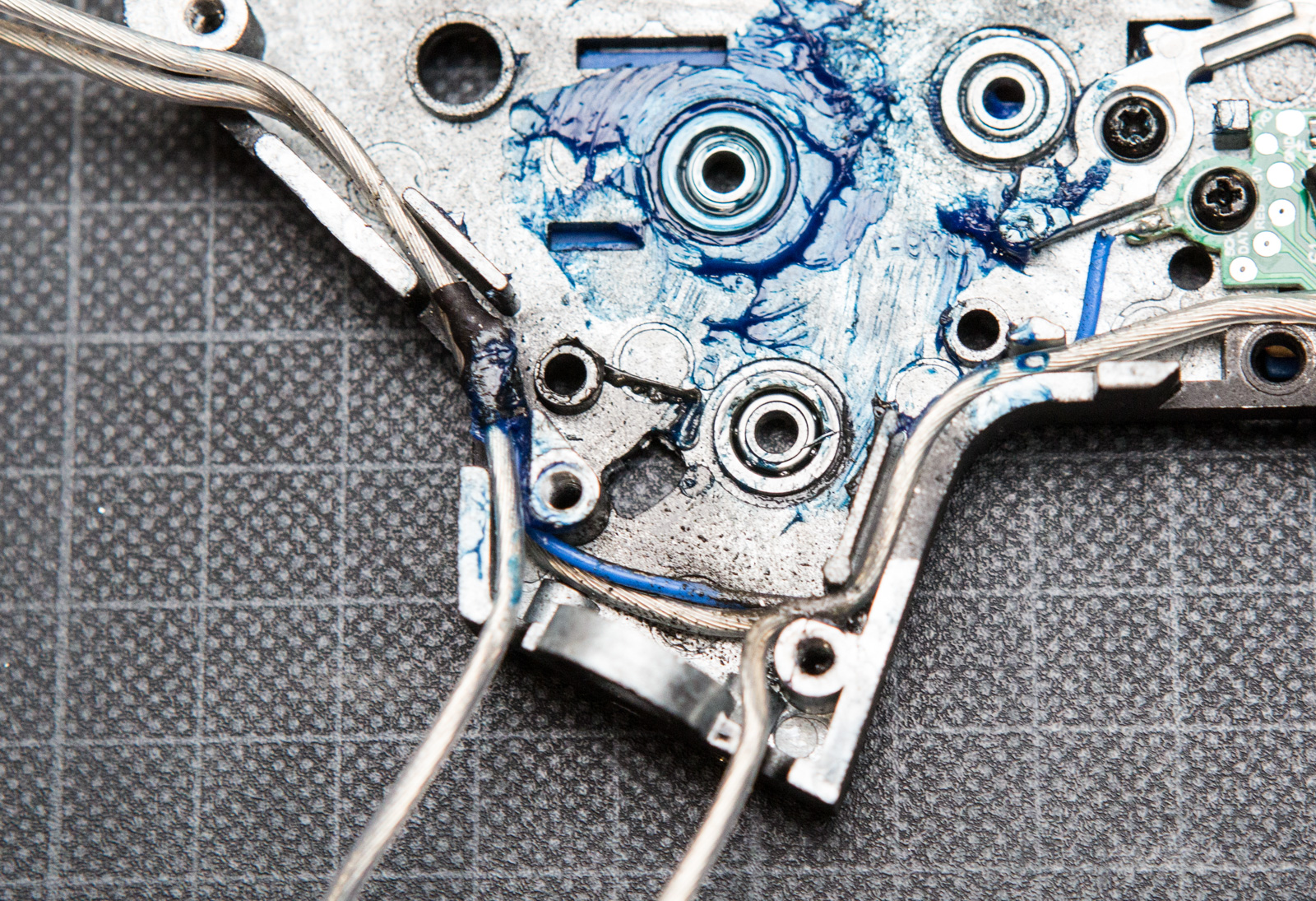
13:1 gears machined out of steel with a standard anti-return latch.
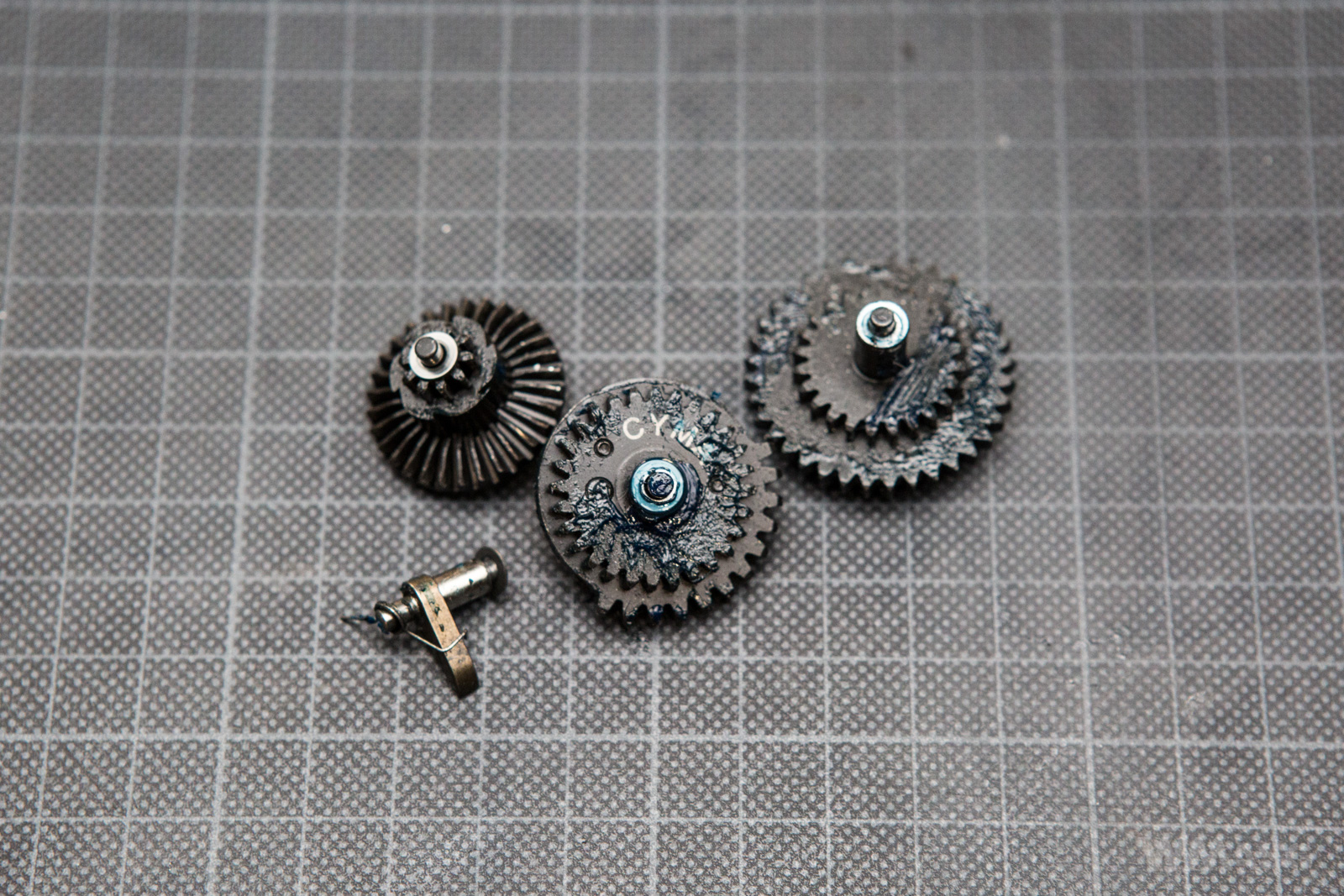
The complete pneumatic system.
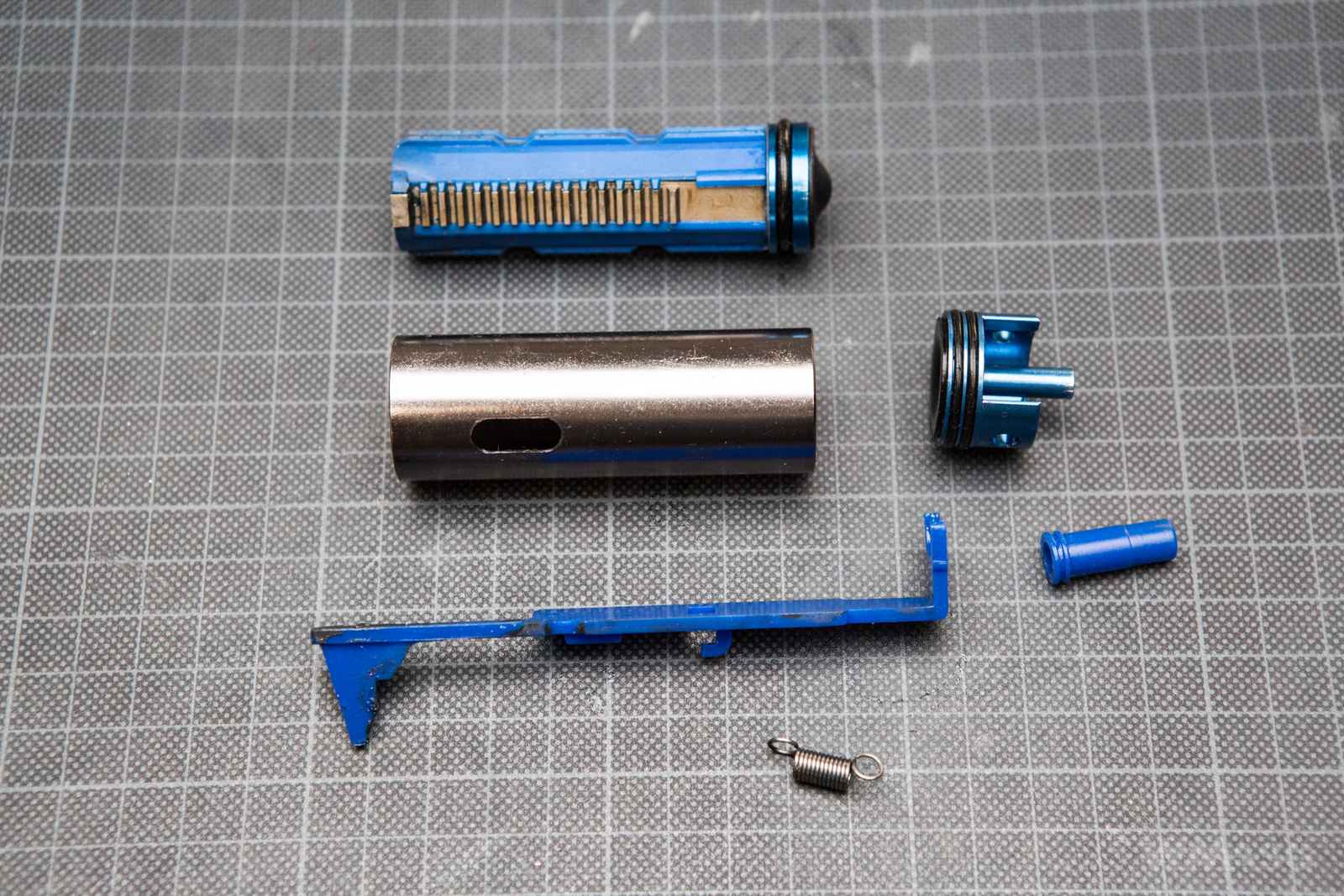
The aluminum silent heads. The cylinder head with a double O-ring. The piston head with a ball bearing. The polymer piston with full steel teeth The polymer nozzle has no O-ring and is 21.4 mm long. It is the weakest part of this configuration. It is worth replacing with a one that has an O-ring.
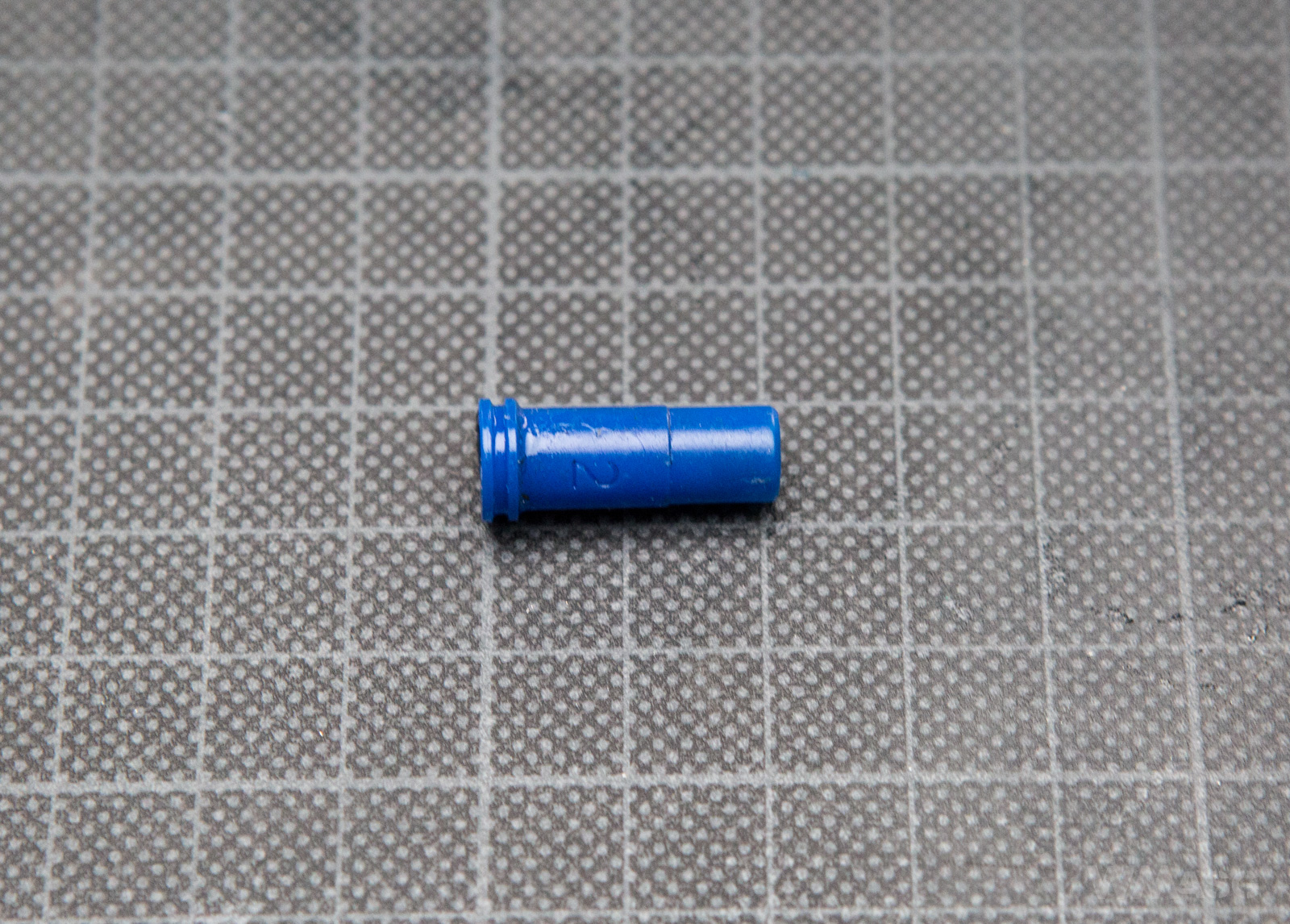
The electronic control module with a MOSFET and a microswitch.
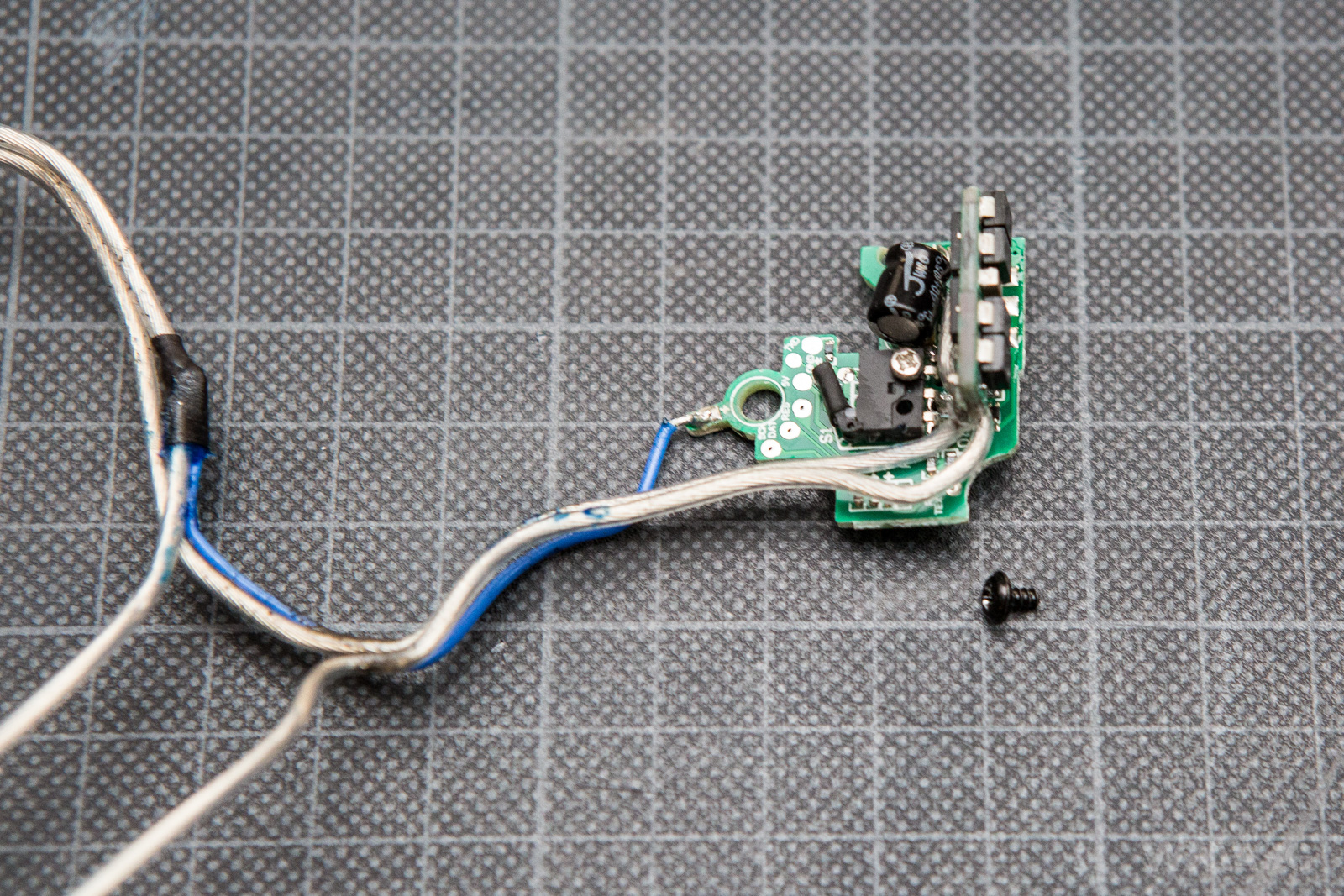
The module is ... not very elegant. However, it works flawlessly and offers a really quick response to the trigger. It uses 3 wires which is a common solution.
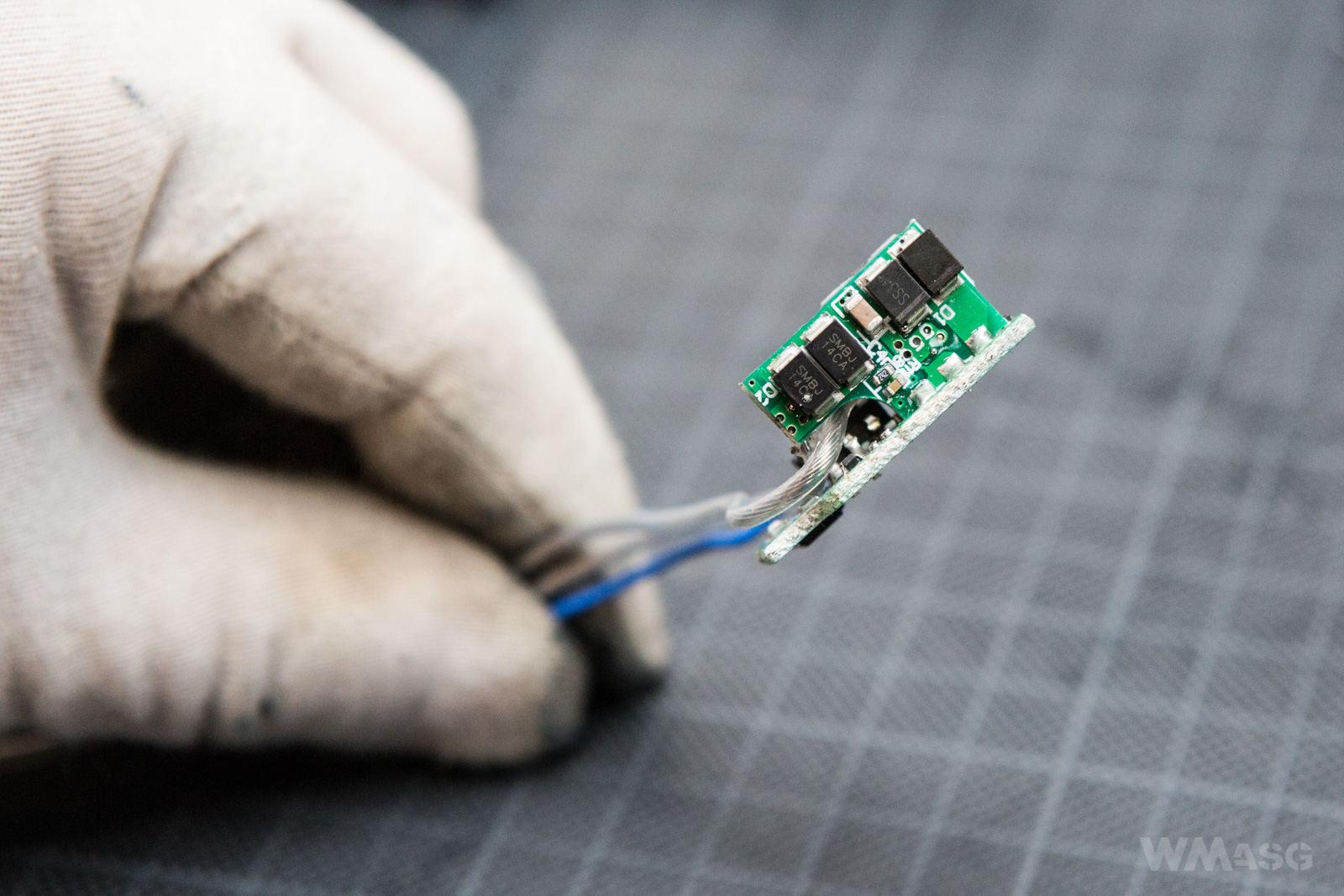
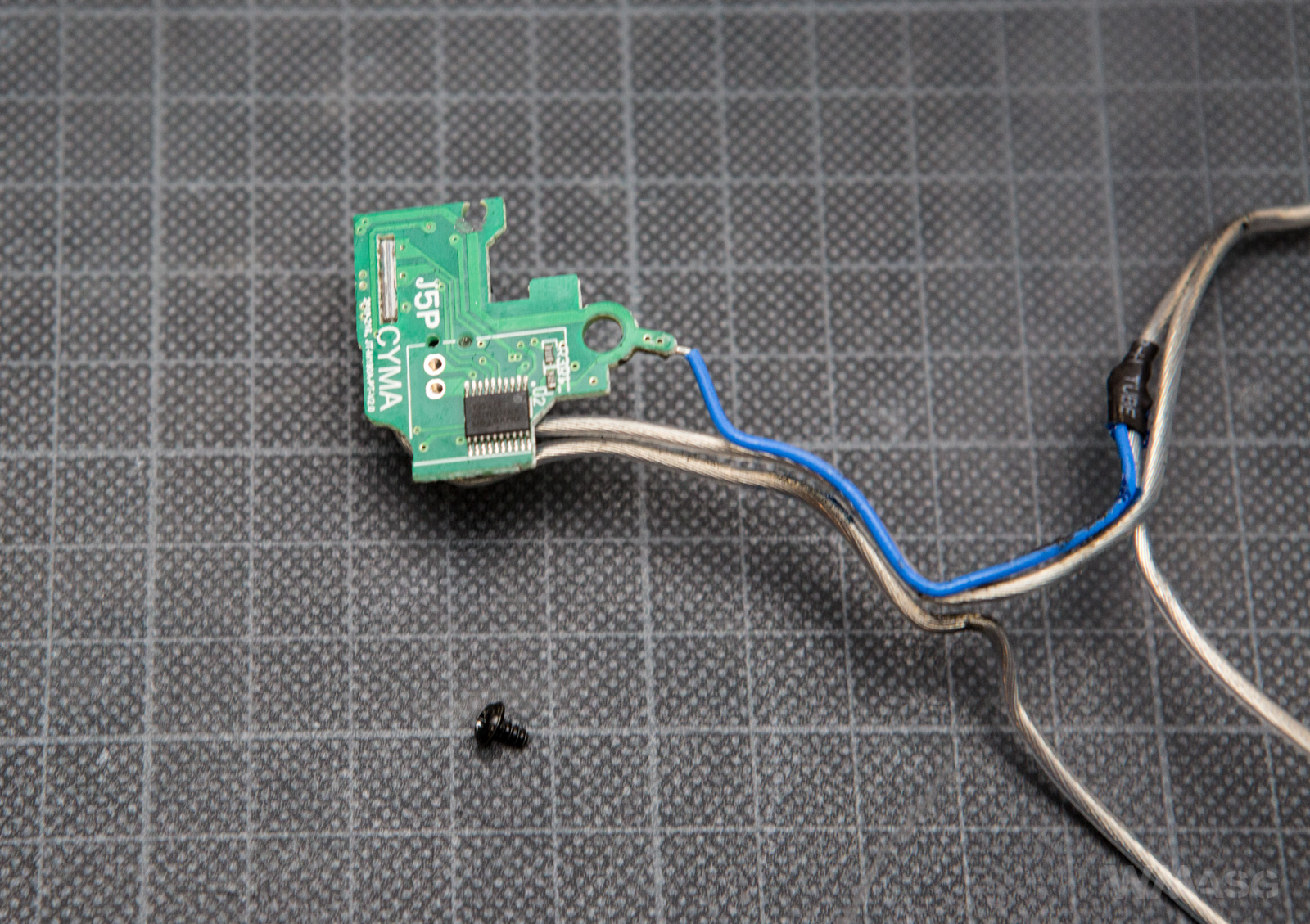
The mechanical trigger latch (in the safe position) requires unscrewing its mounting screw BEFORE opening the frame. The photo also shows a part that allows the anti-return latch to be moved from the outside.
